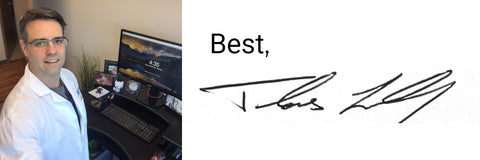Dealing with foot pain can be a draining, frustrating experience. There are some well known foot conditions that are notorious, and widely mentioned in health and fitness articles as far as the eye can see. These include heel spurs, bunions, and hammertoes (oh my!). However, one type of foot pain is much less well known. For this reason, this type of foot pain is often ignored by the sufferer for long periods of time, sometimes leading to chronic severe discomfort. What is this mysterious and pesky condition? Outside of the foot pain!

Outside of the foot pain
Outside of the foot pain can be caused by a variety of issues. Some of these include sprains, strains, stress fractures, soft tissue masses, arthritic conditions, and nerve impingements. However, it has been my experience that outside of the foot pain is most commonly caused by a condition known as "peroneal tendonitis".
What the heck is Peroneal Tendonitis?
The ankle has two peroneal tendons which connect the muscles of the lower leg to the outside and bottom of the foot. These tendons can become irritated and inflamed for a variety of different reasons. This condition can make physical activity involving the feet extremely difficult, and long term damage of the tendons can develop if treatment is not sought in a timely fashion.
How does peroneal tendonitis develop?
Athletes who compete in sports that require repetitive foot ainsoles-for-flat-feetnd ankle motions may irritate the peroneal tendons in the foot or ankle. Runners, beginners and seasoned veterans alike, are particularly prone to this condition.
Other sports that require foot and ankle movement that put the peroneal tendons under considerable strain include golf, basketball, tennis, hockey and skiing
Footwear that has become worn, or does not fit appropriately, may also put the wearer at risk for this injury. Worn athletic shoes may no longer provide adequate support the tendons and ligaments within the foot require while performing high impact activities. Injuries can often occur as a result of this.
Overall foot shape may predispose certain individuals to peroneal tendonitis as well. It is a popular notion that individuals with a high arched foot type are the most common sufferers of outside of the foot pain. While this is likely accurate, people who have an overpronating foot type (flexible flat foot) can also develop this condition.
Athletes who experience an injury to the ankle or foot can develop peroneal tendonitis secondary to the original injury. The most common scenario of this occurring is with chronic ankle sprains. This increases the importance of proper rest and rehabilitation after experiencing this type of injury.
Your physician, podiatrist, or physical therapist can assist you in achieving this. Ankle bracing or arch support insoles can be helpful in preventing re-injury when activity is resumed.

Treatment options
- The use of ice after the initial injury may alleviate pain and control inflammation
- With the supervision of your physician, anti-inflammatory medications can also aid in reducing swelling and pain to the area.
- Arch support insoles, or less commonly orthotics, can control inefficient and painful motion of the foot and ankle.
- Controlling abnormal frontal plane motion of the ankle, heel and foot can alleviate the outside of the foot pain felt with peroneal tendonitis.
- Exercise regimens and schedules should be adjusted to allow healing of the affected area. Avoid repetitive motions of the foot and ankle during physical activity for a few weeks.
- Always have your physician approve your exercise program. Ankle or foot bracing may also be helpful in restricting the motion of the ankle and foot, allowing the injured areas to heal. It may only be necessary to wear a brace during intense physical activity.
- Physical therapists can equip their patients with the knowledge and techniques needed to achieve healing of this area.
- Stretching, range of motion, and strengthening exercises may be provided to recondition the injured area. Occasionally, secondary modalities may be useful such as ultrasound, electrical stimulation, or Graston techniques.
- Often, this condition does not require invasive interventions.
Arch Support Insoles
Arch support insoles and orthotics are commonly used in the treatment of pain on the outside of the foot caused by peroneal tendonitis. These insoles are placed in the shoe, once the shoes factory liner is removed, to control ineffective and inefficient motions of the foot and heel. This is often helpful in reducing the discomfort associated with peroneal tendonitis. It has been suggested by some that arch support insoles may even be effective in reducing the recurrence of outside of the foot pain once it has been resolved. By controlling abnormal movement of the foot and ankle, arch support insoles may prevent peroneal tendonitis from becoming a chronic issue.

Surgery?!
In rare instances, surgery may be recommended as a treatment for this condition. Generally, this is limited to severe situations where tearing or bone spurring has occurred in or around the tendons. This can occur if the initial injury is particularly severe, or if the condition is left untreated for a very long period of time, causing irreversible damage. When this is the case, conservative treatments have generally been ineffective in providing relief. By consulting with your doctor in a timely fashion, and following the instructions for treatment, surgery for peroneal tendonitis can by avoided in the vast majority of cases.
Long term outlook
Commonly, individuals suffering from pain on the outside of the foot fully recover from their symptoms. However, this recovery time can be prolonged and arduous for some. Preventing re-injury once healing has been achieved is paramount. Strengthening exercises, stretching, and arch support insoles can be of value to avoid further tendon inflammation in the future. As always, never begin any treatment plan for any condition without the supervision and guidance of your physician.







